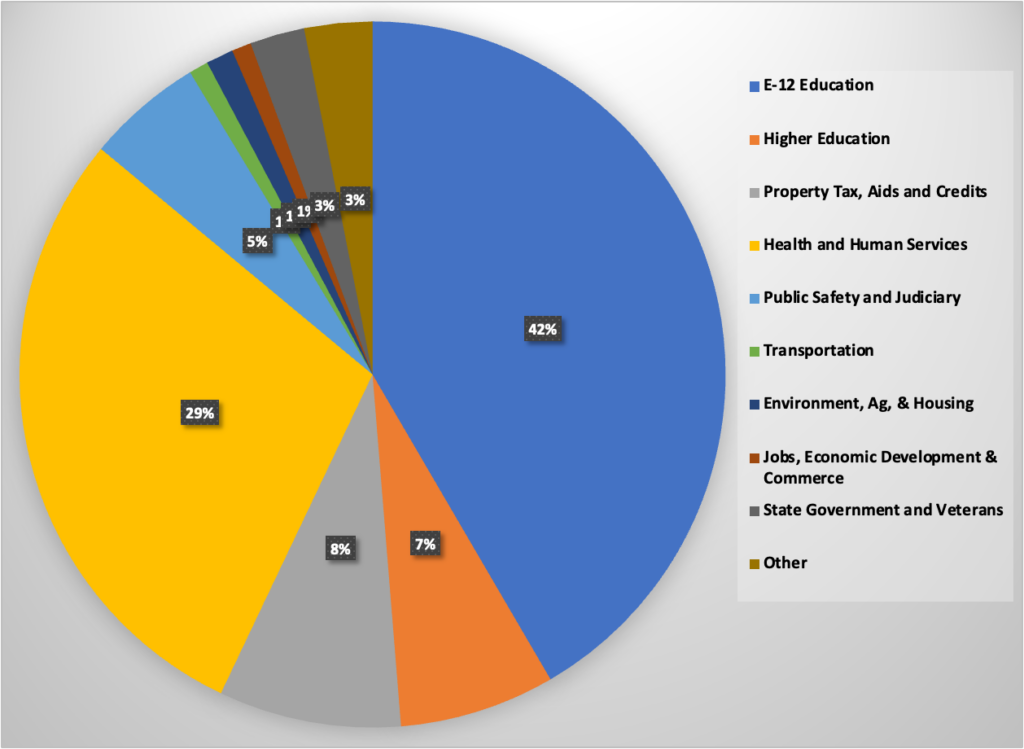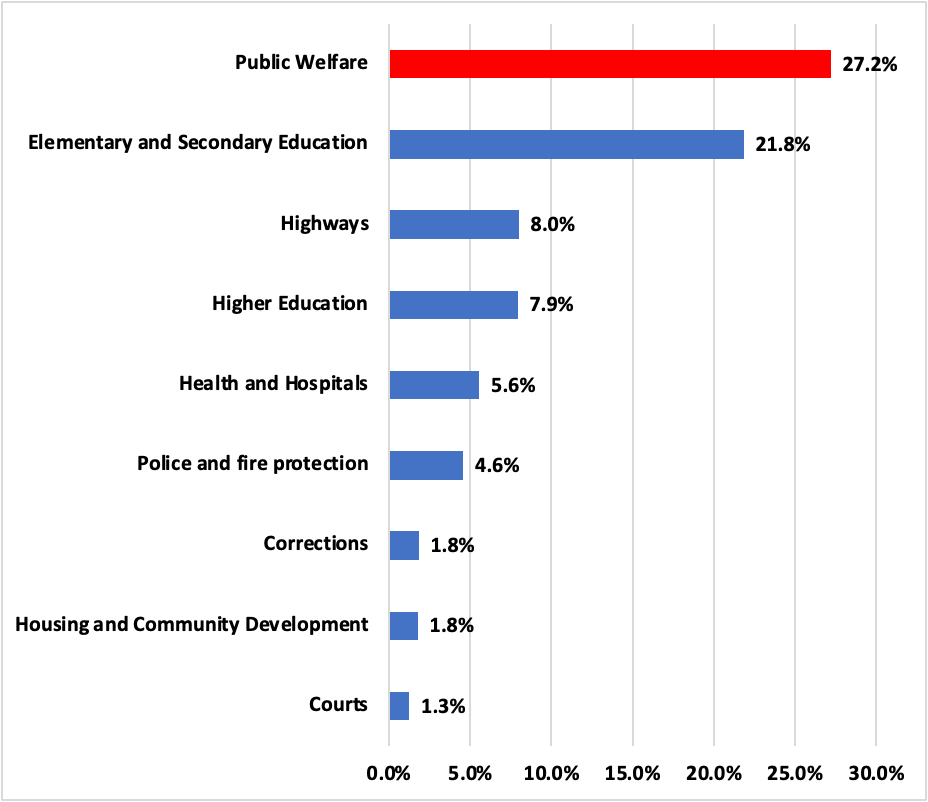What share of the Minnesota budget goes to welfare?
As I wrote last week, last year was a big year for welfare expansion in Minnesota. Overall, lawmakers dedicated over $6 billion in new money to Health and Human Services.
As lawmakers, including Gov. Walz, argued, new spending is supposed to lower costs for vulnerable Minnesotans. Leaving aside the fact that this new spending does not entirely address what’s causing high prices (if prices are indeed higher than they, otherwise would be), there is one important assumption justifying this spending. That assumption is that up until 2023, Minnesota was not spending enough on welfare.
But is this assumption justified? The data as shown in our recent report says no.
Minnesota is a leader in welfare spending either as a share of the budget or when controlled for poverty. For this post, let’s stick with the first metric: welfare spending a share of the budget.
Welfare as a share of general funds
In the most recent normal year that the report focuses on — 2019 — Minnesota spent 29 percent of general funds on HHS. Health and Human Services took the second biggest share of state spending, only behind K-12 education. HHS was also three times the next biggest expenditure — tax credits. When all funds (including federal funds are accounted for), HHS was by far, the state’s biggest spending category.
These numbers were up in 2023. HHS took 30 percent of general funds in 2023 and 46 percent of all funds.
Figure 1: Minnesota general fund spending by category, 2019

Figure 2: Minnesota all state spending by category (Minnesota), 2019

At the national level, the National Association of State Budget Officers (NASBO) collects state spending data which can be used to compare states. And according to NASBO,
in 2019, Minnesota spent 22.1 percent of general funds on three welfare programs: Medicaid, TANF, and other cash assistance programs. General fund spending on these three welfare programs was only surpassed by spending on elementary and secondary education…
Nationally, 19.7 percent of general fund spending…went to Medicaid, TANF, and other cash assistance programs. The median state spent 19.5 percent of general funds…on these three programs, also lower than Minnesota.
…
In FY 2022, Minnesota spent 20.7 percent of general funds on Medicaid, TANF, and other cash assistance programs while at the national level, the share was 18.4 percent.
US Census Bureau data
NASBO data is problematic because some welfare spending data is not specified. So, the US Census Bureau provides a better comparison of state welfare spending.
According to US Census Bureau data,
In FY 2019, Minnesota’s state and local spending (from all sources of funds, including federal) on various functions like corrections, transportation, education, and public welfare — collectively referred to as direct general expenditure — was $62.6 billion. Public welfare made up 27.2 percent of total spending. no other category
spent as much. At the national level, public welfare was 22.2 percent of direct general
expenditure — lower than Minnesota’s share. Among the 50 states, the median share of total spending dedicated to public welfare was also significantly lower at 21.3 percent. In fact, Minnesota had the 10th highest share of its total spending dedicated to public
welfare in 2019.
For both Minnesota and the nation, these figures were up in 2021 — the most recent year for which Census Bureau data is available. For Minnesota, 27.6 percent of all direct general spending went to public welfare, while for the entire nation, the share was
23.4 percent. The median was also up at 23.2 percent and Minnesota’s share of public welfare spendingranked 12th highest among the 50 states.
Figure 3: Minnesota direct general expenditure by category, 2019

Figure 4: Public welfare as a share of total direct general expenditure by state, 2019

All in all, the data shows that Minnesota generally places a huge priority on welfare. Even going back to as far as 1977, the share of spending that Minnesota dedicated to welfare was higher than that of the whole country and has been consistently higher over the years.
The idea then that new spending would lower costs, despite years of high spending is questionable, at best.